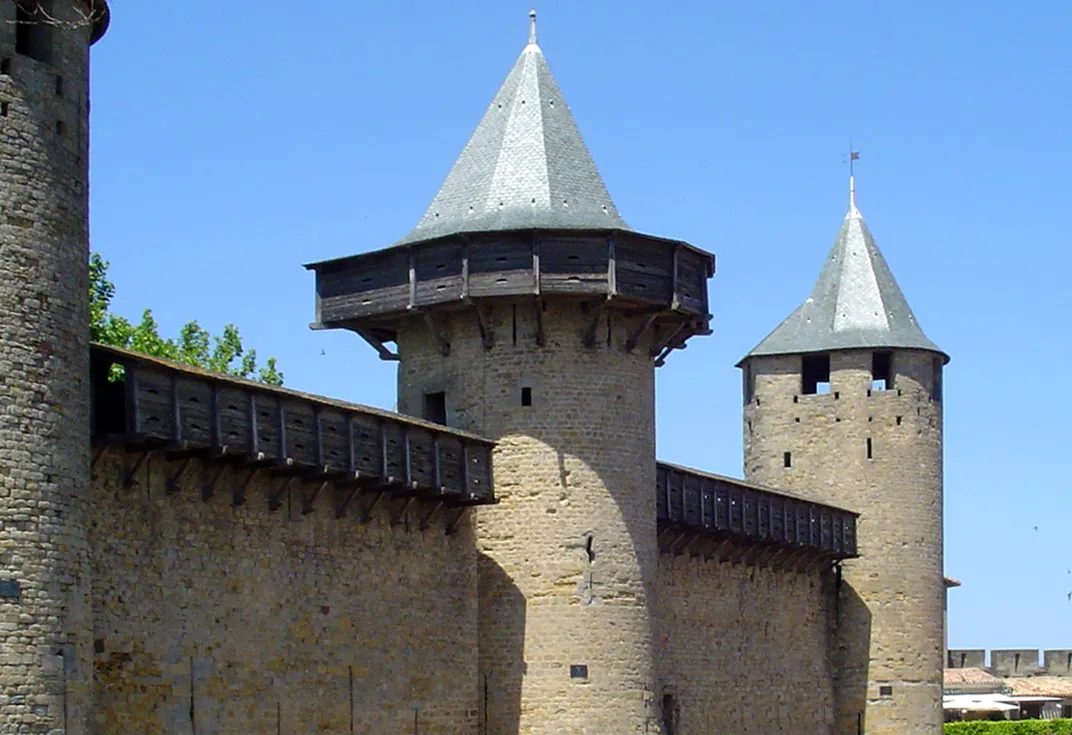The Medieval Origin Story of the Balcony
Architect/historian Eugène Emmanuel Viollet-le-Duc suggested that the balcony was forged in the heat of battle.
/https://tf-cmsv2-smithsonianmag-media.s3.amazonaws.com/filer/71/14/7114a2ba-1047-4633-acdd-f254066d21b6/hourd-1.jpg)
The Venice Biennale is basically the Architecture Olympics combined with the architecture State of the Union and architecture prom. This year’s event, the 14th, titled Fundamentals by influential architect and festival curator Rem Koolhaas, included an exhibition on the past, present and future of 16 architectural “elements” used by architects all over the world throughout history - wall, floor, ceiling, fireplace, stairs and many other concepts, including the balcony. The shifting political and social connotations of this last element were particularly fascinating, as was its “origin story” from from 19th-century architect and theorist Eugène Emmanuel Viollet-le-Duc, who, in his Dictionnaire Raisonné de l'architecture Française du XIe au XVIe Siècle, traces the history of the external balcony to an 11th century anti-siege device: the hourd.
The hourd was a mountable, wooden scaffolding that was installed on the upper walls or towers of a castle when a battle was imminent - sometimes even during battle. As described in the Biennale catalogue, “like later balconies, the hourd boosts exposure to the exterior, balancing safety and engagement with the world below.” Quick and easy to assemble, this proto-plug-in architecture added an extra layer of protection while providing a way to flank attacking forces from up high, as seen in the above image, and allowing defenders to see over the wall without exposing half their body. With the hourd attached, the castle crenellations were like doorways leading onto the balcony-like defense, whose covering was typically clad in slate tiles and the occasional wet animal skin (or even manure) to protect defenders from the slings and arrows of attackers while dropping rocks on the maniacal hordes trying to breach the castle walls.

Examples of reconstructed hourdage can still be seen in castles all over Europe, including the Cité de Carcassonne, a medieval fortress in Southern France that is best known today as the inspiration for a popular board game. Viollet-le-Duc himself was commissioned to restore the fortress in 1853. And though the architect appreciated the functional aspect of medieval architecture--every stone, gate, crennelation, and hole served a purpose--he often took some poetic license. However, as a restorer of medieval architecture, Viollet-le-Duc often took some poetic license with his work; the beautiful restoration of Carcassonne was criticized for being insensitive to regional building traditions.
By the 14th century, the hourd was disappearing, replaced by stronger, permanent stone battlements. But its legacy of protection lives on even today. In his curator’s statement, Koolhaas credited his life to the balcony. “Without my parent’s balcony I would not be here. They lived on the 5th floor of a new social democratic walk-up. Born in the last months of the war, a cold but very sunny winter, when everything that could burn had been burned, I was exposed to the sun, naked, every possible second to capture its heat, like a mini solar panel.”
/https://tf-cmsv2-smithsonianmag-media.s3.amazonaws.com/accounts/headshot/Jimmy-Stamp-240.jpg)
/https://tf-cmsv2-smithsonianmag-media.s3.amazonaws.com/accounts/headshot/Jimmy-Stamp-240.jpg)